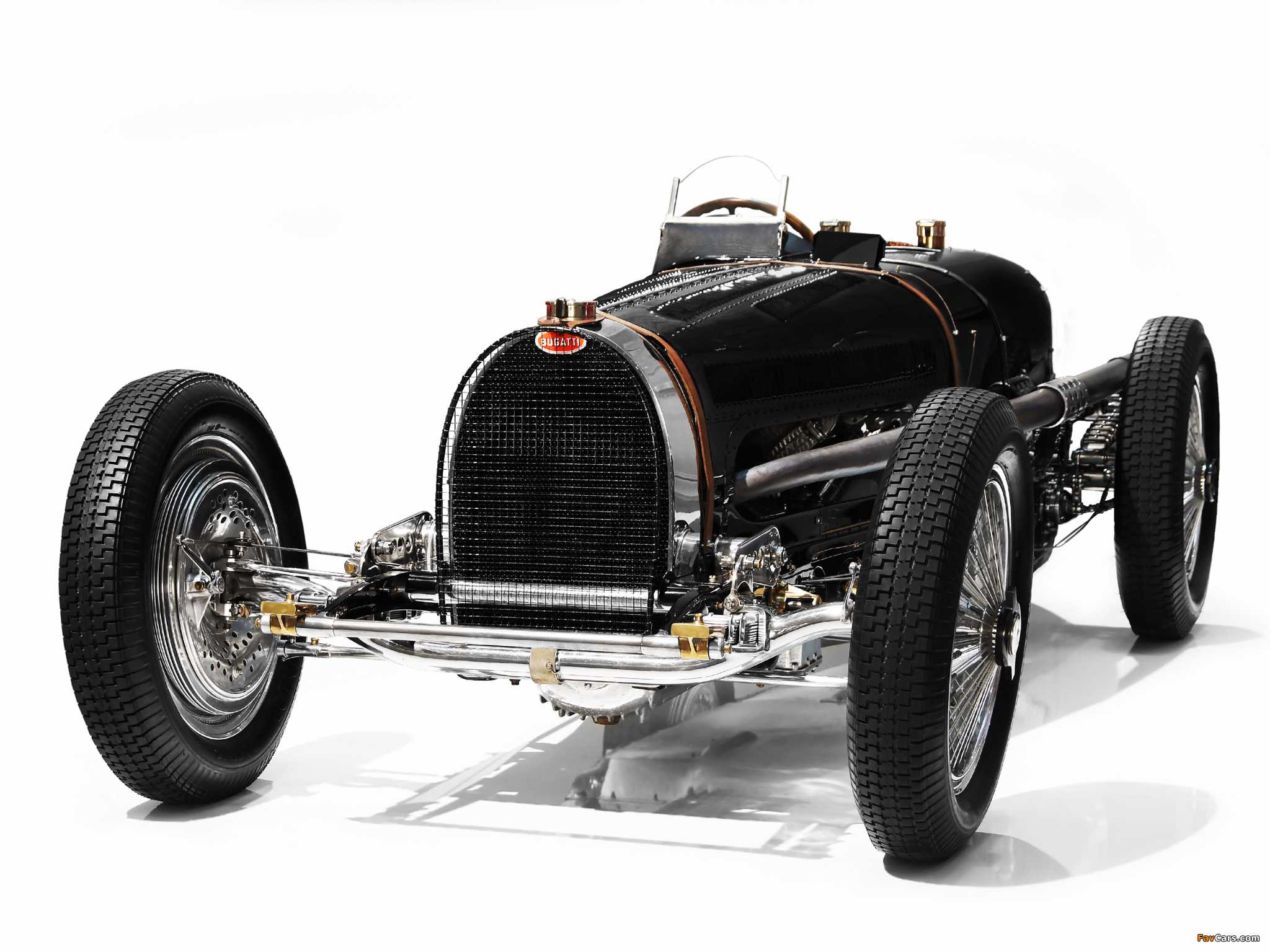1933 Bugatti 59 Grand Prix

The descriptions of the Classic Cars in the Directory were partly generated or supplemented with the help of artificial intelligence (AI). The content may occasionally not always be entirely accurate or factually correct despite careful checking.
The Bugatti 59 Grand Prix debuted in 1933 and was an immediate sensation. This racing car was built to compete and win. Its design was cutting-edge for its time, with a chassis constructed from lightweight, highly durable alloys that provided exceptional rigidity and strength.
The engine of the Bugatti 59 Grand Prix was a marvel of engineering. It developed an impressive 175 horsepower from its eight-cylinder, supercharged powerplant. The car's top speed was a remarkable 155 MPH and could reach 60 MPH in just over four seconds. Its gearbox had a four-speed manual transmission, with syncromesh available for the third and fourth gears, ensuring seamless shifts.
The Grand Prix was designed to be aerodynamic, with a low profile and a tapered body, making it highly streamlined, perfect for cutting through the air. The car's suspension used a unique, and highly regarded, independently sprung system, which was adjustable to suit different track conditions. Its brakes were advanced for its time, with cable-operated racing drums and pads custom-designed to provide maximum stopping power.
The Bugatti 59 Grand Prix was also noted for its steering system, which was highly responsive and allowed for precise handling, which was incredibly important for any racing car of the time. With its low center of gravity, the car could take corners at an exceptional speed, without losing any traction or stability.
The exterior of the Grand Prix was a work of art, with sleek, flowing lines that were both functional and aesthetically pleasing. The body was constructed from aluminum, with a gorgeous polished finish. The car’s wheels were spoked, with distinctive Bugatti-styled rims, which not only added to the car's overall look, but were a crucial element for racing performance too.
Overall, the Bugatti 59 Grand Prix was an engineering marvel that combined power, handling, and aerodynamics to create the ultimate racing car. Its technical details were impressive for its time, and it is still admired today by car enthusiasts and collectors alike. With only eight produced, the Bugatti 59 Grand Prix has become one of the rarest and most legendary racing cars in the world.
Milestones
- 1933: Bugatti 59 Grand Prix is unveiled at the Paris Auto Salon - 1934: First race appearance at Monaco Grand Prix, driven by René Dreyfus who finished in 3rd place - 1934: Bugatti 59 wins the French Grand Prix at Montlhéry with driver Jean-Pierre Wimille - 1934: Wimille also wins the Pau Grand Prix and the Grand Prix de l'Albigeois in the Bugatti 59 - 1935: Bugatti 59 is retired from racing and becomes part of the collection of Dr. Peter Williamson - 1950s: Bugatti 59 is exported to the United States and passes through several owners - 1970s: Bugatti 59 is restored and returns to Europe - 1980s-1990s: Bugatti 59 appears at various historic racing events, including the Goodwood Festival of Speed and the Monaco Historic Grand Prix - 2021: Bugatti 59 Grand Prix is auctioned off by RM Sotheby's for over $13 million.Technical
- Year of manufacture: 1933 - Manufacturer: Bugatti - Model: Type 59 Grand Prix - Engine: 3.3-liter supercharged inline-eight engine - Power output: 250 horsepower at 5,500 RPM - Top speed: 135 miles per hour - Transmission: Four-speed manual - Suspension: Double wishbone front suspension with a De Dion rear axle - Dimensions: 153.5 inches long, 55.1 inches wide, and 41.3 inches tall - Weight: 1,720 pounds - Brakes: Hydraulic drum brakes - Fuel system: Dual carburetors - Cooling system: Liquid-cooled - Tires: 5.50 × 19 inches front, 7.00 × 19 inches rear - Racing history: Won three Grand Prix races in 1933, including the Monaco Grand Prix, and was driven by several notable drivers, including Jean-Pierre Wimille and René Dreyfus.